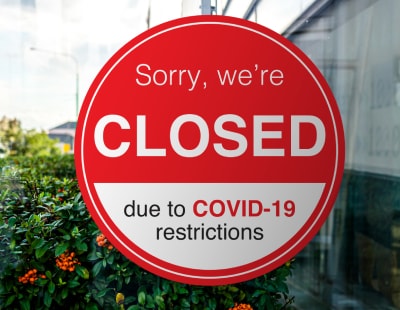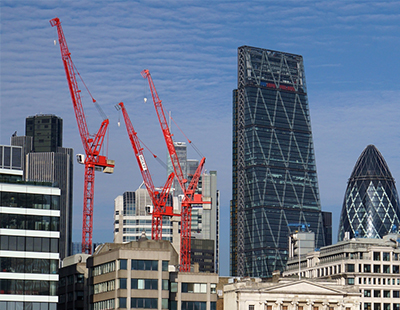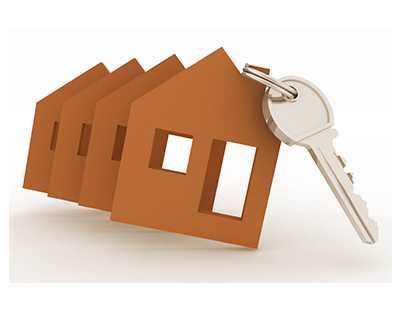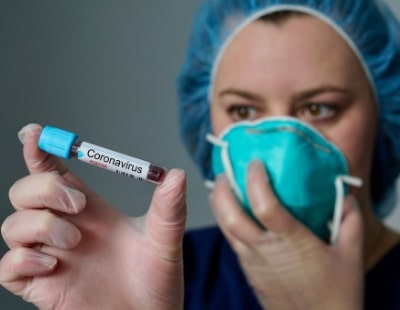On the panel were Sarah Quinn, director of operations at Moda, Lizzie Stevens, director of market rent at Folio, Sophie Trotman, marketing manager at Folio, and Will Waller, director of BTR at Arcadis, with Dave Butler – CEO at the UKAA – moderating the discussion, and Peter Sloane of Love 2 Rent offering comment and posing some introductory questions to get things started.
The hour-long webinar offered an excellent insight into how this still relatively new market has adapted to the challenges posed by the coronavirus crisis.
A strong and stable asset class
There is evidence to suggest that Build to Rent is currently one of the strongest and most reliable asset classes, and always has been – which could help it to bounce back quicker than most parts of the market as institutional investors see it as a safe haven.
While the overall value of BTR in the UK at present, and how this has been impacted by Covid-19, won’t be clear for some time yet, the panel was united in the fact it was a unique challenge and an exceptional, unforeseen set of circumstances.
The BTR market could hit a sweet spot, though, with people moving towards this market for a number of reasons, Sloane said.
“Residential sales are now under enormous pressure and valuers are finding it difficult to nail valuations with little market activity. This will only be unlocked in stages. Job and income uncertainty are also predominant, which means I can’t see people wanting to take on mortgage debt. There’s likely to be a restriction on the sales market for some time.”
Will Covid-19 uncouple us from the homeowning obsession that has been in place since WWII? Sloane asked rhetorically.
He said BTR is certainly set up for the new normal, designed to foster the work from home culture with designated co-working spaces, fast broadband speeds and an often digital-first outlook.
He also argued demand is still very much there, with Love 2 Rent noticing a 40% increase in registrations on its website since lockdown began.
He concluded by saying that the public see the BTR model in a positive light, which should also aid its continued growth.
A move from social to virtual
Sarah Quinn says Moda Living has always viewed the community model as the right road to go down. But, with social distancing measures in place, this sense of community and communal space is taking on a different slant.
“We invested a considerable amount of time in providing all our residents with an app,” she said. “They can communicate with the concierge team, our wider team, communicate internally. What the app allows us to do is build a communication forum, which is particularly Covid-19 related at the moment. They can share concerns, worries and positives while not being able to mingle. It’s also a great place for new and updated information.”
When it comes to amenities and resident engagement – such a key tenet of the BTR movement – she says a creative shift has been needed to switch things into the virtual mode.
“We now have gym classes online, nutrition sessions, mental wellbeing sessions. This is working really well, with positive feedback from our residents. Doing classes virtually was quite a new concept, but now they are becoming the norm.”
Resident engagement has also included workout sessions in the courtyard, balcony workouts and DJ beats sessions, as people are encouraged to engage and socialise, just in a very different, social distancing-friendly way.
Moda has also offered a number of perks, such as giving residents access to a free Netflix night, or popcorn and beer for a movie night.
Quinn says resident engagement has been switched to virtual because the amenities in Moda’s buildings have, for obvious reasons, been closed down. “We can’t offer the gym or co-working spaces. Most operators are having to look at this for social distancing purposes. It’s a big sense of responsibility and hard to police effectively.”
She added that, as a result of Covid-19 and so many more people now working remotely, many of those researching their next home are looking at the quality of internet provision. “It’s highly important, with a lot of people searching for WFH opportunities. BTR accommodation delivers that.”
The sense of community will also be increasingly important, she says. “We want to be seen as local champions, we want people to embrace our community and culture and that of each city we operate in,” she said.
She concluded by saying that BTR is developing fastest in regional locations, with there seeming to have been a significant shift away from central London to suburban and regional locations in terms of investment.
Clever and creative thinking
Lizzie Stevens says the impact of Covid-19 could be an opportunity to grow Folio’s BTR portfolio because there will be an increased focus on living, and where people are living. She thinks, too, that BTR could become increasingly commonplace in suburbia, but asks whether this is too much of a risk. Will the demand be there?
“There’s going to be opportunities that come out of this,” she added. “We need to be clever and creative in our thinking.”
Sophie Trotman, in charge of Folio’s marketing approach, says recent weeks have been ‘super busy’. She says there have been some big changes in Folio’s marketing strategy, from reactive to proactive. And a predominant focus on digital.
“The PRS and BTR market is usually very fast-paced and reactive. A lot of big providers focus on direct marketing normally. Now – because you can’t have your outdoors press and media – digital is more important than ever.”
She agrees that demand is definitely still there. “We haven’t seen leads drop much at all, but they are different. People don’t want to move in tomorrow or next week. Now, the leads are for those looking to move in June and July, when this calms down. And people don’t want to move far, they want to move somewhere close by, within a three mile radius.”
With regards to residents and community, she says the ‘biggest thing we’ve learnt through Covid is that communication is key’.
“No-one could have anticipated this, but showing we are here for our renters is the key thing. Things like welfare calls from property managers. That one to one communication. A Facebook page for all our residents so neighbours can talk to each other.”
Folio has also focused on fun social competitions – things like sending in a best attempt at a Jamie Oliver recipe or the best home workout.
Trotman says that BTR tends to attract a lot of creative types who work for themselves, or in workplaces who have now furloughed them or made them redundant. As a result, they have a lot of time on their hands. To counter this, Folio created a place for people to promote their business, using its own platform as somewhere for people to advertise their services. “We’ve had yoga classes, magicians, people wanting to test out beauty products. We’re trying to keep that sense of community despite lockdown.”
Butler intervened: “What’s the evidence that we can convert enquiries into leads? Have there been any move-ins?”
“Deals are still being done,” Trotman went on. “When lockdown first came in, everyone froze. Now we’re settled in, people are looking to the future. If they do need to move in the next few months, they’ll be looking now. We have virtual tours on all our properties. Essential to helping us secure deals. People can view through a computer screen and see what their apartment looks like.”
Folio has also offered a 3-weeks rent-free incentive for new residents. “That way people have leeway and time. People don’t have to start paying rent straightaway.”
Is construction still going ahead?
Will Waller, director of BTR at design and consultancy firm Arcadis, said the most recent BPF data showed the strength of the momentum before the crisis hit, with a 40% increase in the number of UK units in planning. But how quickly will these new schemes get built?
“It’s been a mixed picture in terms of site closures. Some were closed, some weren’t. Most are looking to reopen this week, or imminently.”
He said there are challenges in the supply chain with physical distancing. “Methods and processes are being reworked to accommodate that. There have been some issues with materials and plants facilities.”
The other key issue, he says, is financial fragility – which goes all the way back to the global financial crisis, but Covid-19 has compounded these issues.
Waller said there will be an impact on the product in the short-term because of social distancing and longer-term changes in what the customer wants and needs. “The increased focus on hygiene might extend to how buildings are constructed. Access, space, light, ventilation – all will be crucial. And the importance of connectivity, which will be greater than ever after.”
Butler said there have been signs that developers, investors and constructors have all been working together of late. Will that continue?
“There has been a notable consensus across the industry about working together,” Waller replied. “The only way to get through this is open, honest engagement. We need to learn from past crises, the global financial crisis being the obvious one, and avoid the mistakes made after that.”
“For sectors like BTR, where there could be significant growth, it’s crucial that the supply chain is there to deliver it,” he added.
He said there may be issues on social distancing at building sites, with productivity probably reduced. “But there are proactive initiatives in the supply chain, looking at how that challenge can be worked around. Some areas of challenge and disagreement, yes, but the trend at the moment is collaboration,” he concluded.










.png)









Join the conversation
Be the first to comment (please use the comment box below)
Please login to comment